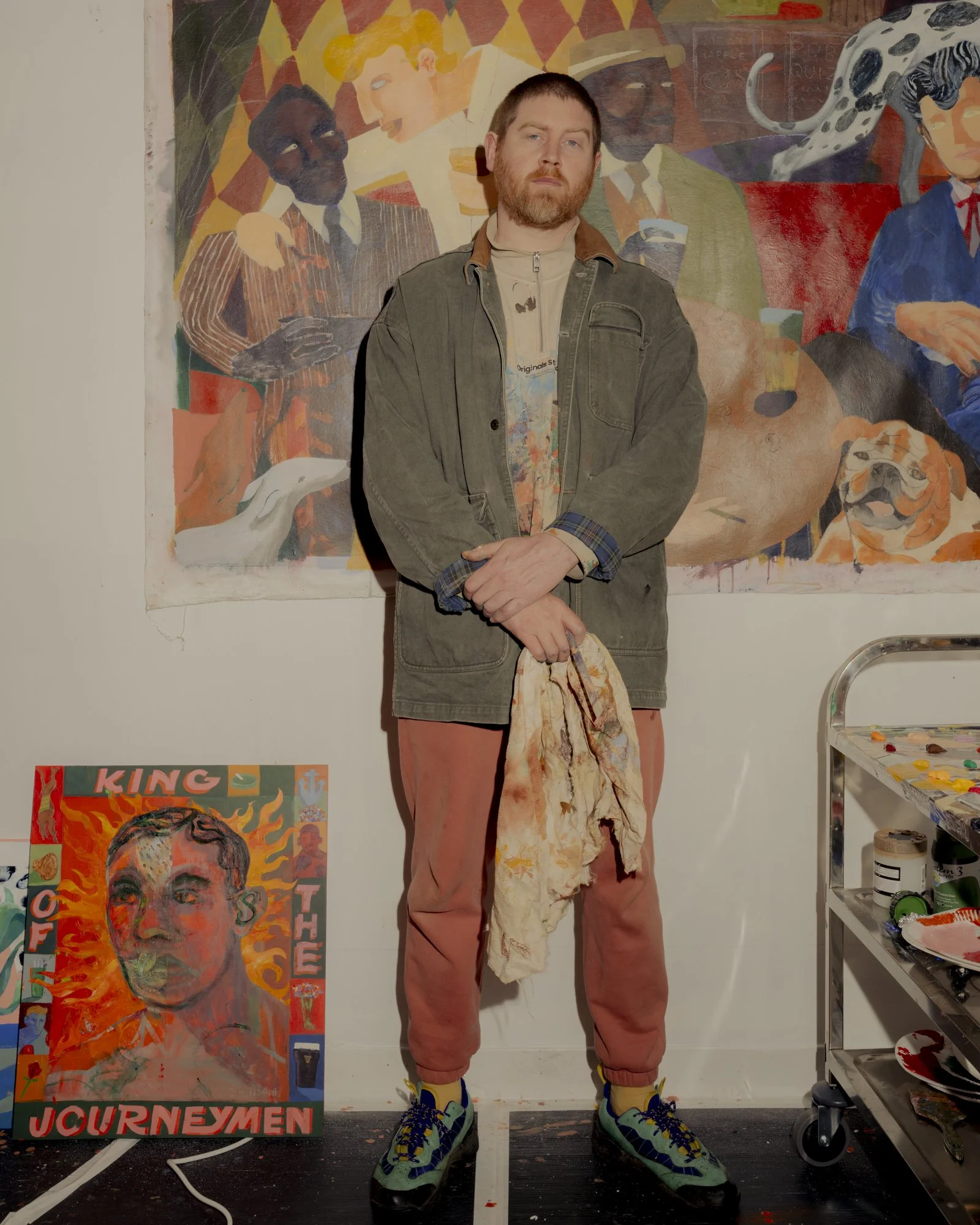Jack Tierney is a contemporary artist based in Redruth, Cornwall. His paintings and prints are influenced by the bold colours and brushstrokes of fauvist and post impressionist painters and the playful, naïve mark making of folk art.
His highly stylised works are recordings of the world around him, his interests and passions as well as popular culture, iconography and folklore.
His works appear in many private collections and he has exhibited both nationally and internationally.
His work is available directly via his online shop as well as through established galleries such as Velarde Gallery, Vanner Gallery, McCully & Crane, Close and Circle Contemporary.
“Long before I painted on canvas I spent a large part of my creative life painting graffiti. Those years have informed my studio practice, even if it’s not always on a conscious level. Things like the immediacy and looseness of painting at large scale and the idea of being efficient in communicating ideas. These are the things that I bring to my studio practice.
I think anything can be the subject of a painting, it’s up to the artist to make something seemingly mundane into something interesting. Sometimes I paint still life’s, other times figurative works where there will be a narrative involved. References to popular culture and folklore also appear in my work.
I’d say the nature of my process is the relationship between control and a lack of it. I often choose to tackle ideas as they form directly onto the canvas. This isn’t an efficient way of working, but it always pulls the work in unintended directions. It often involves painting over things several times. That’s when you get up close and you can see every minute and monumental decision, there in the slithers of exposed paint between one layer and the next. That’s really where the painting is made.
I’m interested in making work that feels slightly at odds with itself, sometimes even a bit clunky and awkward. I’ve always been really interested in naïve and folk art. There’s this golden time when you’re younger where you want to be able to draw well but you haven’t quite worked out how proportions and perspective works. You try, and you’re almost there, but there’s something missing. This is what I’m interested in capturing with my work. The time just before we learn to become refined and polished. I’m far more excited by the badly painted portrait than the hyper-realistic one. The soul of the work is in the flaws and there is a truth to that which I think people relate to. It feels very human, and it’s a reminder of how fun it is to create, or how nostalgic it makes us feel for our childhood when we did.
That’s a hard thing to embody without it feeling forced or contrived though. That’s the paradox, to paint badly, but to do it well.”

